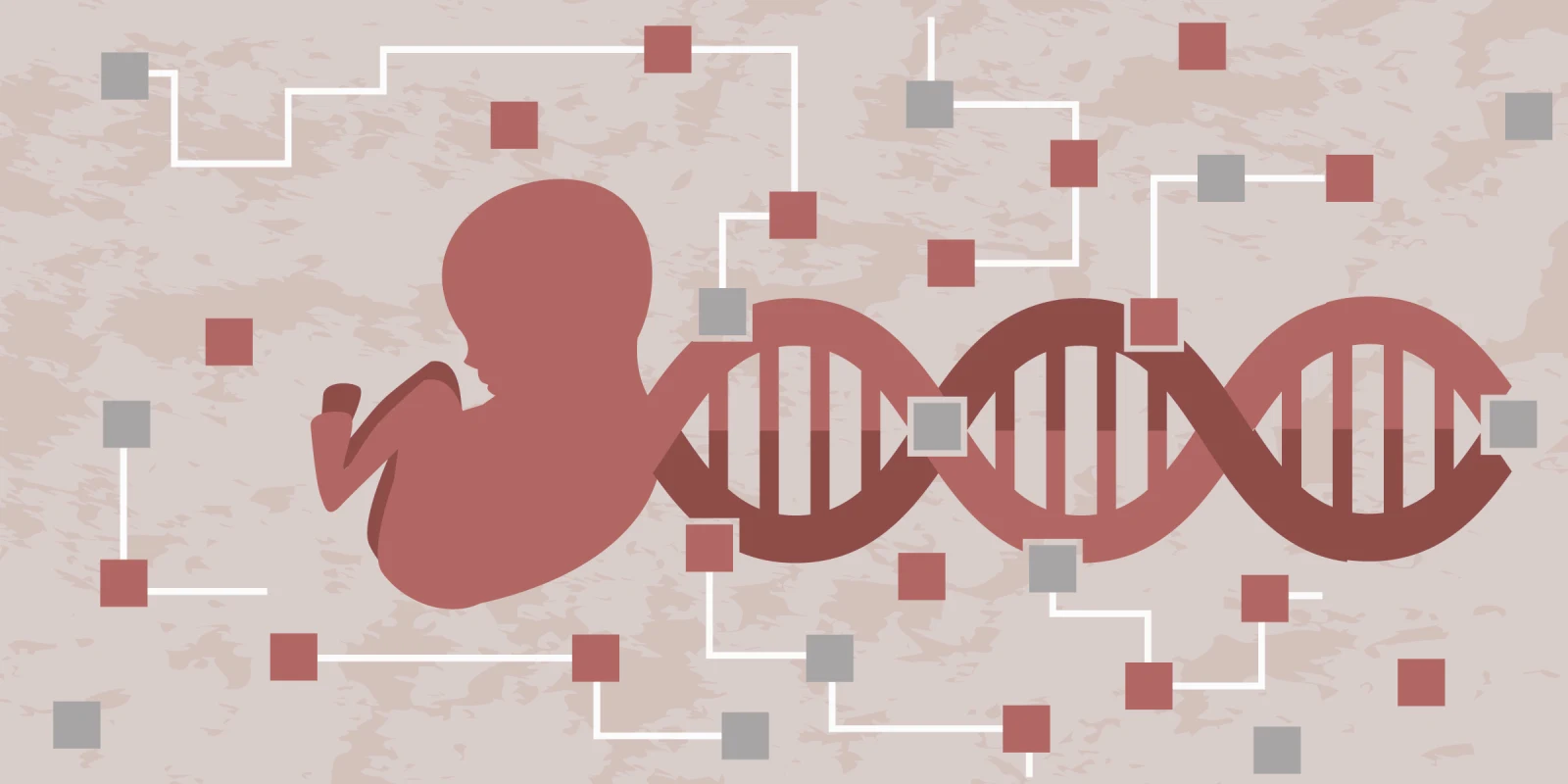I chose to be a reproductive endocrinologist and infertility specialist because the field is always changing. Since IVF was developed 40 years ago, more than 8 million babies have been born from IVF. Over these four decades, the rapid adoption of new technology has led to markedly improved success rates, along with a much lower risk of multiple pregnancies.
This past week, the fertility community from around the world gathered for the American Society of Reproductive Medicine 2020 Annual Meeting. While we could not gather in Portland as we had planned to, the conference went on virtually. The social interaction and in-person camaraderie that characterizes this meeting was certainly missed, but the energy that was present throughout the conference was still palpable through the screen. This year, one topic overshadowed all others: the management of mosaic embryos.
The ability to create embryos in the embryology lab offers an opportunity to evaluate their genetic makeup prior to transferring them into a patient, with the goal of ensuring the best chance at a healthy baby (of course, no amount of testing can guarantee this). The concept is simple: biopsy a part of the embryo, evaluate the genetic make-up, and make a decision whether you want to transfer that embryo.
Thirty years ago, in 1990, the first embryo biopsy was done on a couple at risk for a sex-linked disease and in 1993, the same was done for cystic fibrosis, an autosomal recessive condition. Since then, we have had tremendous advances. We now biopsy embryos on day five after fertilization, allowing us to take about five cells out of about 100, instead of the 1 out of about 8 that we used to previously on day three. We also use next generation sequencing, a much more powerful sequencing technology, compared to the early days of Fluorescence in situ hybridization or array comparative genomic hybridization. Both of these have led us to learn a lot more about what is happening in the early embryo, but also created some interesting challenges.
The way our current technology works is that it takes a random sample of about five, but up to 10 cells from the trophectoderm. This is the part of the embryo that will become the placenta in utero. These cells are processed as one unit and the average of all cells is analyzed. This relies on the assumption that the biopsy is reflective of the embryo’s genetics, and that assumption is being challenged. Black and white cases are where all cells are either euploid (normal) or aneuploid (abnormal), and you would only transfer normal embryos. However, with increased granularity due to better sequencing techniques, we are now able to see some biopsies that yield intermediate results which are neither fully euploid or aneuploid, and these are what we term mosaics.
Mosaicism is formally defined as the presence of more than one chromosomally distinct cell line in a single sample originating from one individual. For example, some individuals with Turner syndrome may have both normal 45, X and 46, XX cells. While this phenomenon is not new in biology, it is one that we as a field are grappling with, as mosaic PGT results are present in between 4% and 20% of biopsies. This is not a true “mosaic,” but rather an intermediate chromosome copy number (between aneuploid and euploid). Nonetheless, the term chromosomal mosaicism is commonly used to describe these embryos.
Previously, we deselected all transfers of mosaic embryos and labeled them as abnormal when we have biopsy results. This led patients with no euploid embryos to either seek another cycle, use an oocyte donor, or perhaps discontinue care. Most recently, however, we have learned that mosaic embryos do have significant reproductive potential to result in births of seemingly normal infants. The ASRM published guidelines August 2020 regarding the transfer of mosaic embryos, including how to interpret them and counsel patients. However, due to the rapidly expanding literature one of the authors recently said that this document is “likely already outdated.”
At this year’s conference, there were several important studies that addressed this issue. An oral presentation by Dr. Manuel Viotti and colleagues reviewed the outcomes of more than 1,000 mosaic embryos that were transferred across multiple centers worldwide. In their analysis, mosaic embryos had implantation rates of 46.5%, compared to 57.2% for euploid embryos and live birth/ongoing pregnancy rates of 37%, compared to 52.3% for euploid embryos. They also reported that the type of mosaic trait, or in other words the type of abnormality, does impact the expected outcomes with a 2–3 fold difference in success rates. For comparison, the ASRM recommendation from August 2020 did not find enough evidence to recommend a hierarchy of which type of mosaic embryo to preferentially transfer was advised.
Another study from the IVI-RMA group, presented by Dr. Ashley Tiegs, reported the outcomes of a prospective, blinded, multi-center, non-selection study looking at the outcomes of whole chromosome mosaicism (a whole chromosome is involved) and segmental aneuploids (only part of a chromosome is involved) on outcomes. Some 402 patients underwent 484 single, frozen, blastocyst transfers out of which 3.3% (n=16) were diagnosed as whole chromosome mosaics and 8.1% (n=39) as segmental aneuploids once PGT-A results were unblinded. They found that whole chromosome mosaics had similar outcomes to euploid embryos (68.8% vs. 64.7% odds of sustained implantation/live birth), while segmental aneuploids appear to have lower sustained implantation and live birth rates (30.8% vs. 64.7%). In both cases, these embryos were able to create healthy pregnancies.
These findings beg the question of whether the biopsy is truly representative of the embryo, and the going assumption is that this is not always the case. Explanations of why embryos that are presumably abnormal are able to create pregnancies is that we are sampling the trophectoderm and not the inner cell mass, which is the part that becomes the fetus, as well as that embryos can self-correct with normal cells overtaking abnormal ones. The types of mosaicism that are most likely to result in live births is still out for debate, and as more clinics start transferring mosaic embryos, the body of evidence will only grow.
Another issue at hand is whether there are risks to infants born to mosaic embryos. To date, there is no evidence from any of these trials that the infants have developmental abnormalities. Furthermore, we have been transferring mosaic embryos since the beginning of IVF. We just did not know about it, because we did not test the embryos prior to transfer. While the data is so far reassuring, the numbers to date are small, so we must continue to follow these infants and track their developmental outcomes.
As expected, this topic has gained a lot of interest from patients and the media. Women who previously believed they had no embryos available to transfer are now becoming aware that embryos deemed abnormal do have the potential to create a live birth. With a mix of excitement, outrage, and confusion, many are seeking to understand more about their options, and physicians are trying to counsel them with the best, yet still limited, data that we have.
Over the next few years, I expect our knowledge on this topic to evolve significantly. Only time, and good studies, will help us ascertain the true reproductive potential of different types of mosaic embryos and how to best counsel patients regarding these. Personally, I am already looking forward to the 2021 meeting and the advances that will be presented there (hopefully in person!).
Dr. Eduardo Hariton is an Ob/Gyn and reproductive endocrinology and infertility fellow at the University of California, San Francisco. You can find him on Facebook and Instagram under @haritonmd. The author is a consultant for Modern Fertility, Evernow, and Orchid Biosciences. The opinions in this article represent the author’s and not those of his employer or associated enterprises.







